Secrets to eCommerce Success: Build a Robust Operation
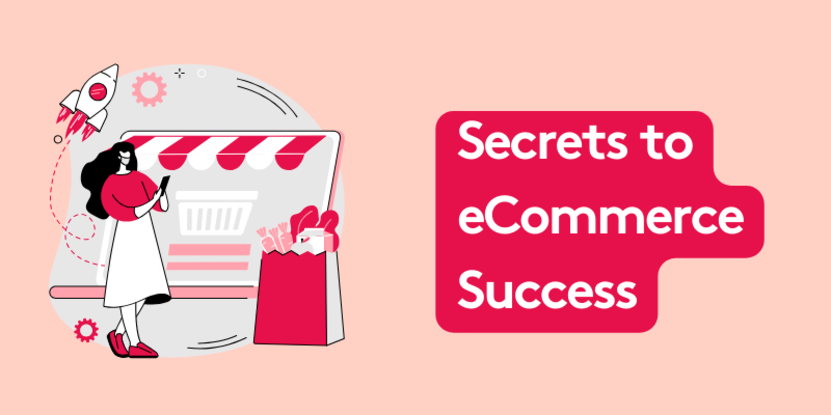
On this page:
Efficient organization marks the difference between a successful store and one on the road to diminishing sales and subsequent failure.
Keeping the mechanics that turn your eCommerce store well-oiled is crucial. You can’t increase sales, fulfill orders at max capacity, and amplify marketing if you’re operating from a weak, rusty base.
Some areas of focus for a robust eCommerce base are:
Optimizing existing operations

The explosion of eCommerce and digital marketing bleeds deep into any business, whether a B2C or B2B.
Take the role of B2B salespeople for example; previously, B2B salespeople would spend their time checking in with customers, maintaining relationships, and collecting orders. But eCommerce has turned this into an independent process.
In fact, “Death of a (B2B) Salesman” by Forrester e-business analyst Andy Hoar, projects that 1 million sales reps, or 22% of the 4.5 million B2B sales agents now in the United States, will lose their jobs to eCommerce by 2020.
With B2B becoming digitized, the bulk of the buying decision is made beforehand.
Buyers aren’t calling up to inquire about product/services, they’ve browsed your website, your competitor’s site, checked multiple reviews - they have a good idea of whether they want to order or not before they interact; diminishing the role of traditional B2B.
Research shows that nowadays 82% of buyers state their purchase decision has been significantly affected by a vendor’s social content and about 84% use referrals and peer recommendations to verify their decision.
Understanding this, you can:
1. Carve out your value proposition and let it seep through all customer contact point
Because even your competition will have information that talks about what they offer, it’s how you do things differently that separates you from the pack and draws leads.
2. Thoroughly understand your leads
Accurate customer personas are important here because whether you like it or not, your website and online image are what bears the brunt of the “selling”. So you need to ensure copy, products, and information are targeted towards select buyers that make up the bulk of your market. But to do this effectively, you need stop relying solely on demographics.
Instead, dig deeper with data-backed demographics and more importantly - psychographic profiling established from surveys, analytics, interviews, and your sales team. Why?
Because like we mentioned in our post on eCommerce personalization, the deep-rooted motivation behind why John Doe and Dave Smith visit your eCommerce store is far more important than the fact that John works at an office, and David drives a taxi.
3. Use brand-centric marketing that magnetizes your brand and builds strong relationships
Garner reviews, get recommendations from influencers and solidify your authority to boost credibility and breed a sense of trust and familiarity by:
- Incentivizing customers to leave feedback
- Creating valuable content that actually solves pains and problems
- Connect and cross-promote with influencers in your market
- Provide all-around solid customer service. This means rapid response times, quick solutions, and over-delivering value.
Magnifying profits by measuring your margins
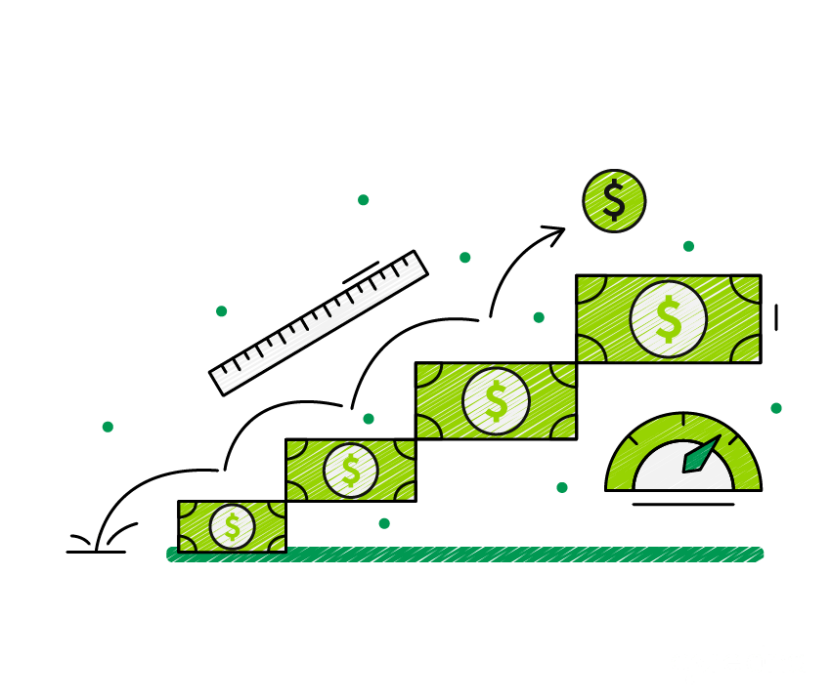
Running a digital store is (arguably) easier to organize and measure. Especially with swaths of data just keystrokes away.
But an online store comes with its own unique costs, hosting, technical IT assistance, website design, and a host of other variable factors. Further stressing the importance of accurately tracking the right metrics (featured below) to understand your margins:
Customer churn
This is the number of customers you lose in a certain time period. Simply put, it is how many customers stop paying for your product or service in a given period of time.
Cost Of Goods Sold (COGS)
COGS is the is the total of all costs used to create a product or service, which has been sold.
Operating costs
Operating costs include sales & marketing, overhead, payroll, travel expenses, etc. Essentially, these are the costs associated with running your business.
Gross margin
Gross margin is the amount of money you make per product sold. It’s determined by calculating the difference between the cost to make or buy a product and the online selling price.
For example, if you sell a product for $20.00 and it cost you $10.00 to make, you’ve made a gross profit of $10.00. So your gross margin would be 50%.
Gross Margin = Sales - Cost of Goods Sold
Customer Lifetime Value (LTV)
Customer Lifetime Value simply measures the profit your business makes from any given customer. Knowing your LTV will help answer pivotal questions like:
- How much can I afford to spend acquiring a new customer?
- How much can I spend on retaining customers and reducing churn?
- What upsells and cross-sells can be given to the best customers?
You need the following three variables to get your customer lifetime value:
- ARPA (Average Revenue per Customer)
- Gross margin
- Churn/loss of custom (if applicable)
Take the revenue you earn from a customer, subtract the money spent on acquiring and serving them, and see how long they generate profit before churning.
LTV = ARPA * % Gross Margin / % Churn Rate
Customer Acquisition Cost (CAC)
Acquiring new customers can be costly, and that’s why tracking CAC is a must. Because pumping hard-earned money into a marketing channel with negative returns will kill your eCommerce store.
CAC refers to the resources that a store uses in order to acquire an additional customer. It includes all efforts necessary to get your products and services into the hands of potential customers, and then convincing them to buy.
Common acquisition expenses are paid ads, staff salaries, CRM, marketing automation, software licenses, sponsorships, content marketing, and social media.
Knowing your CAC will help you:
- Determine your actual profit margins
- Optimize customer Lifetime Value
- Identify and reduce the costliest acquisition expenses
To calculate your CAC, take your total sales and marketing expenses over a given period of time; then divide by the number of new customers acquired in the same period.
Strengthening your store with hiring the right staff
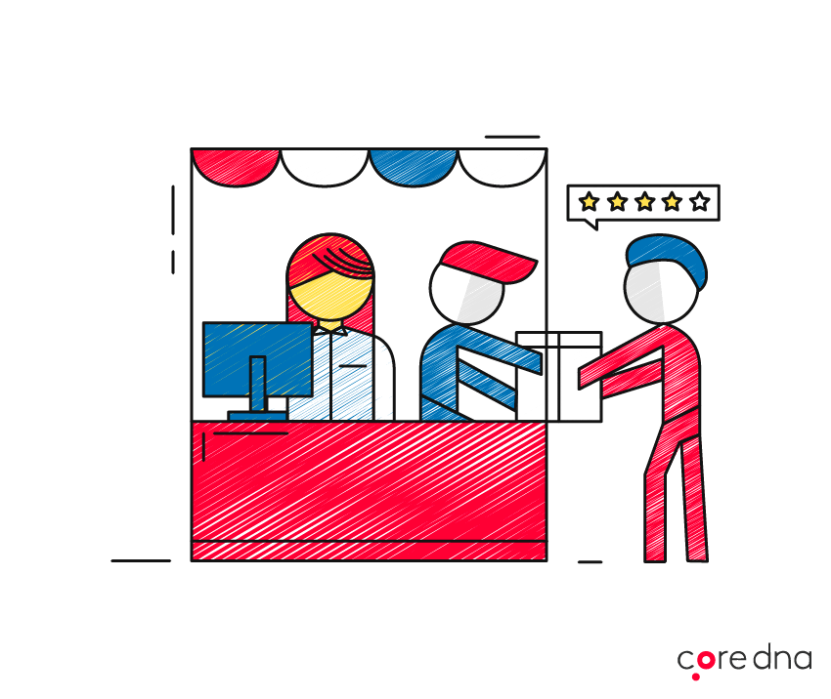
As we’ve mentioned before, the rapid rise of eCommerce sowed seeds for a whole new category of jobs. While traditional jobs like B2C/B2B rep roles have regressed, there’s a surge of jobs that basically never existed nearly two decades ago, such as:
VP of growth
Or “growth hacker” is your right-hand man/woman for everything marketing. The marketing equivalent of a walking swiss army knife; growth hackers are versed in various marketing disciplines. And are usually heavily involved with content, outreach, conversions, A/B tests, and managing other marketing staff to help you drive more sales.
Content managers
Either staff or third party content producers hired to create valuable content that builds relationships and credibility, attracts an audience and boosts traffic.
Social media managers
Your go-to for maintaining a consistent brand image on social media platforms
Conversion rate optimizers
Specializing in boosting ROI for every lead/customer that visits your store by running technical, comparative tests throughout your website.
User experience or interface specialists
From homepage to checkout, user experience designers aim to streamline on-page interaction to increase lead engagement and keep customers happy.
For example, you have tons of traffic and have ample leads on site, but they aren’t buying. You might want to regroup your efforts to enhance conversions and UX. If you feel you need a firmer grasp on your profits/margins, bring in the number crunchers.
Keeping positive cashflow
82% of businesses fail due to poor cash flow management.
If there’s a single factor that decides whether your eCommerce store sinks or swims, it’s cash flow.
Things like marketing, demand, and logistics, are the muscles and bone of your business. But regardless of how strong your muscles and bones, you won’t survive without blood being pumped into/around them. Similarly, cash flow is the lifeblood of your eCommerce store.
Its absence eradicates the possibility of anything else functioning.
Despite high margins and plentiful profits, struggling to fulfill financial obligations can cripple a business. On the contrary, a business that’s got air-tight cash flow can still be unprofitable, or barely scrape by.
Your groundbreaking marketing strategy, your new split test ideas, your innovative fulfillment process, your new product line; cue the cheesy music - because without cash on hand to enable implementation of these ideas, you’re frozen with distant dreams while stranded on a sinking ship.
It’s tempting to think that growth = profitability, which = success. But just like the human body, growth comes knocking with its own demands and “growing pains”, and they often become damaging if not satisfied.
If demand for your product soars, so will sales. This creates a chain reaction where you need to:
- Pay for extra inventory
- Cater for higher volume of shipping and fulfillment
- Hire staff to help with fulfillment
- Process slightly more refunds and returns
- Hire extra staff to cater all the sales and customers queries
All these things cost cash, and without cashflow, your store doesn’t have the necessary cash to support sustained growth. Best case scenario? You fail to grow and anger customers, racking up debt along the way; the noose on your cash flow tightening further. Worst case? You cause permanent damage to your brand, kill your eCommerce store, and get buried in debt.
To improve your cash flow:
1. Nurture current customers
The profit made off a new/current customer might be equal, but with regards to cash flow, the profit made from current customers is superior - because it doesn’t necessitate spending cash.
With existing customers, the more profits you make, the less your expenditure to generate said profits.
Tracking and improving LTV - Lifetime Customer Value - is a great place to start for improving profit from current customers. However, around 58% of businesses are slacking when it comes improving their customers LTV. LTV is a solid base for understanding how much cash you’re able to invest per customer and what returns to expect. Some solid practices for boosting LTV are:
- Implement cross-selling and upselling effectively
- Crank up your email marketing with segmented email campaigns
- Bundle similar products together to increase consumption
- Offer special discounts and rewards for higher shopping cart values
2. Use analytics to refine your spending
For airtight cash flow, you need to make data-driven decisions that make logical sense. This means peeking behind the digital curtains to inform a cash flow budget.
You want to use data to answer questions like:
- How many people are actually converting?
- At your current pace of growth, how much cash do you need on standby each week/month/
- If demand was to soar unexpectedly, do you have enough cash reserves to facilitate that growth and feed your business?
- What’s your cost per lead, how can it be reduced?
3. Monitor how returns impact your bottom line
22% of brick and mortar retailers avoiding selling online due to costs of managing delivery and returns.
And at least 30% of all products ordered online are returned compared to only 8.89% bought in brick-and-mortar shops. Scary statistics for eCommerce store owners. But the erosion of profits caused by out of control returns is even scarier.
When an item is returned, not only do you lose the profit made on the sale, and incur costs covering returns, you also risk losing that customer’s business permanently. Adhering to a convenient and friendly return process (we’ll talk about this later) will improve customer satisfaction, reduce returns, and preserve your cash reserves.
Product development: Expand your catalog

The internet’s far-reaching impact has destroyed geographical selling barriers.
Products have the potential to reach millions. But like any organism in a dynamic environment, evolution and adaptation are crucial. In similar fashion, at some point, you’ll need to expand your existing store products or develop new ones to satiate emerging market demands.
Having an online presence accelerates this process. Letting you find or create winning products, then enabling you to test the waters before investing or occupying inventory space by:
1. Using your list to gather info
Whether it’s sending a survey, or a simple yes or no question, or even blasting out a pre-order campaign, email gives you access to highly accurate feedback based on your current pool of customers. But what type of information is to be gathered from customers to fuel and validate product development?
Below are the lines of questioning to following:
- In their own words, what does your current product help customers achieve?
- If they had a magic wand to solve one big problem/pain, what would it be?
- What competing products do they purchase in your market that aims to address the same issue as your product?
- Why do they choose them as well as your product?
- How can your existing product be improved?
- What features do they dislike about your existing product?
- If you were to offer “XYZ” product, would they purchase it now?
2. Driving traffic to Kickstarter/crowdfunding
By using sites like Kickstarter, you get to validate demand and mitigate startup costs for a new product.
This is what Michael Gerber of Comfortable Boxers did to raise $142k in just 30 days with 2000 paying customers. Driving free and paid traffic to his Kickstarter campaign allowed him to reach over 570% of the fundraising goal, and more importantly, validate his idea with minimal risk.
3. Interacting with customers on social media
Reaching out and talking to your top customers, or gauging response to social media posts about a new product line/type can indicate demand.
And not only does monitoring social media accounts for reviews/feedback give you insight into how “hot” or “cold” your customers are, it also reveals your competitor’s customer satisfaction levels.
4. Harness the power of “ghetto” pre-orders
Is it possible to validate a profitable product with just $200 in 14 days?
Ask most eCommerce store owners this question and the answer is “probably not”. But it’s been done.
Justin Mares used a “ghetto” validation process to launch his now 6 figure bone broth business, Kettle and Fire. Here’s a super concise breakdown of his journey and what you can learn from it:
- Justin didn’t have an existing list of customers (or health nuts as they’re called on the Kettle and Broth website). Keywords and search trends were his go-to’s for checking if people were interested in Bone Broth.
- This qualified further digging, leading him to keywords planner on Google for the same Keyword (Bone Broth).
- After validating an actual market for the product, Justin got more specific with who was actually looking for the product by scouring forums and reddit. The aim is to see which communities were searching for Bone Broth. He found they were primarily vegan and superfood enthusiasts.
- Justin validated the market and identified specific demographics for his customers. Now for the ultimate test: were people willing to pay for Bone Broth? To answer this, a simple landing page was created with an order button.
- Justin then used a cheaper form of paid ads to drive traffic, Bing Ads, to the page. Resulting in over 7,000 visitors in with just $50 ad spend. The best thing? 30% of them ordered, resulting in $500 in pre-orders alone.
- Once people ordered he emailed them to inform them the product wasn’t ready. He offered a refund, or a discount when the product was released. A smart move, this way no customers were angered and he was able to receive payment for his pre-orders from eager customers.
Product returns: Don’t let this be your Achilles heel
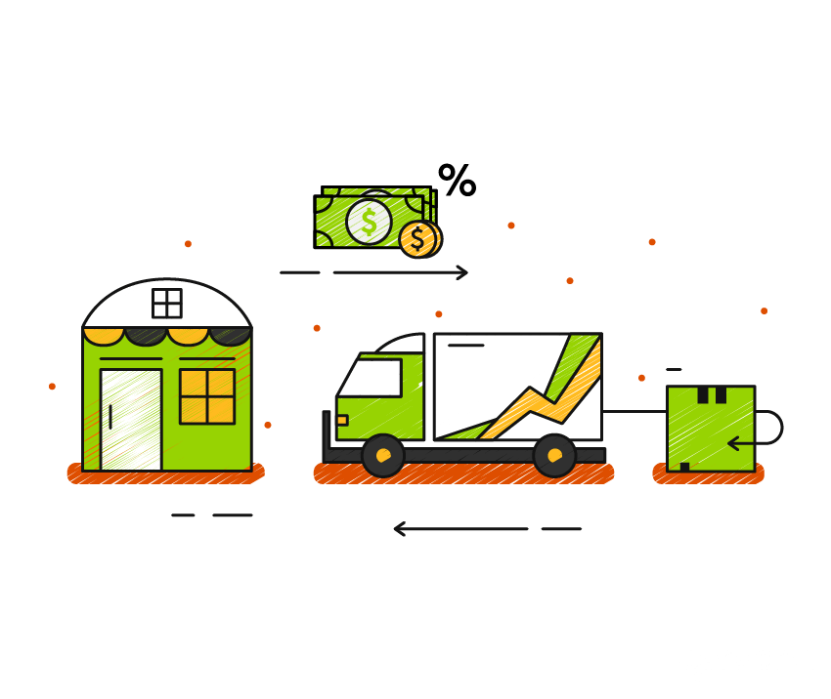
Consumers return almost 30% of eCommerce orders online, and over 90% are more likely to repeat purchase if returns are easy.
Returns are even worse for specific eCommerce categories:
- 20% of apparel and soft goods are returned
- 50% of expensive items purchased online are returned
Your returns process can make or break your customer satisfaction. It’s the deciding factor in whether or not unsatisfied customers remain loyal because you’ve treated them right, or leave because they feel cheated and disappointed with their purchase.
Take Zappos for example, their entire USP is their insanely generous return policy that hooks customers and keeps people coming back.
A solid returns policy will boost customer loyalty, reduce returns, and lift your conversions. Follow the steps below to craft your own profit-boosting return policy.
1. Prevent returns from happening in the first place
Guess who’s at fault when products are returned?
Nope, it’s not the customer.
It’s mostly the retailer’s fault. A 2008 Forrester study, which was conducted on behalf of UPS, found that eCommerce returns were the retailer’s fault in 65% of all cases.The study found that:
- 23% of returns are due to the wrong item being shipped.
- 22% of returns are due to the difference in product appearance.
- 20% of returns are due to a damaged item being received.
Pre-emptively address these issues by:
- Ensuring that fulfillment double checks product
- Your images, pictures, or videos accurately reflect and resemble the physical product. It’s proven that a lack of relevance or contradicting a customer’s expectations kills conversions and plummets customer satisfaction.
- Take extra care with delicate items to ensure they’re not damaged during delivery
2. Use a simple returns process to boost sales
Zappos was one of the first to offer a generous 365-day, free two-way shipping and return policy that practically invited customers to order shoes, and return them if they weren’t 100% satisfied.
This kind returns policy has marked them as a dominant retailer of shoes online and plays a pivotal role in encouraging customers to buy because there’s absolutely no risk involved on the customer’s end.
Does this mean you need to offer super generous return policies? Of course not, but you should take heed and remove the burden of risk from the return process.
The more you let the customer know that you’re shouldering the burden, the more comfortable they’ll be ordering from you. Sure, you’ll incur costs by offering free return shipping, but research shows the long-term benefits of free-return shipping outweigh the short-term costs.
For one retailer, free return shipping boosted sales by 357%:
"
Using surveys and spending data, researchers tracked the habits of customers over 49 months at two leading online retailers. After a free-return shipping policy was instituted at one of the retailers, average spending per customer increased by $620 over two years. At the other, it went up $2,500.
So, free returns might cost you a little more, but profits made from higher conversions and happier customers will reimburse those costs and inspire long-term loyalty. But guess what’s prevalent with generous reward policies?
Higher return rates. Especially from the subset of customers called “serial returners” or “wardrobers”.
The digital equivalent of “tire kickers”, these are the type of customers who frequent car dealership, test drive numerous cars, and don’t buy. They’re just trying things out and are tempted by generous return policies. You’re most likely going to encounter them if you go down the generous returns policy route, so beware.
- Make your return policy a prominent page feature: Don’t tuck your returns policy away like you have something to hide. Feature it prominently on every page and make it clear that you’re comfortable with returns.
- Use a return center: Having a separate team or return department can be an awesome way to streamline the return process. And it projects a professional image. If possible, do it.
- Give ample time for returns: It might seem like this results in more returns, but paradoxically, this can increase sales and actually reduce returns by providing customers with confidence in your product, and again, mitigating risk on their behalf.
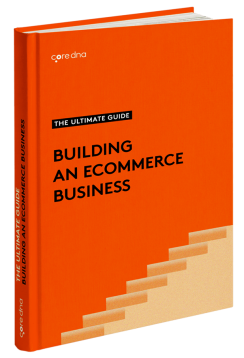
Get Help Growing and Scaling your eCommerce Business
Blueprint on how to start, build, and grow a multi-million dollar eCommerce business.













